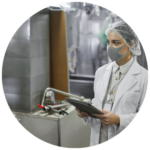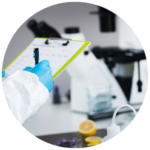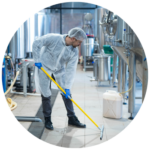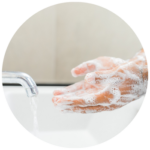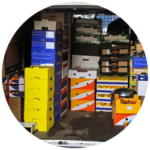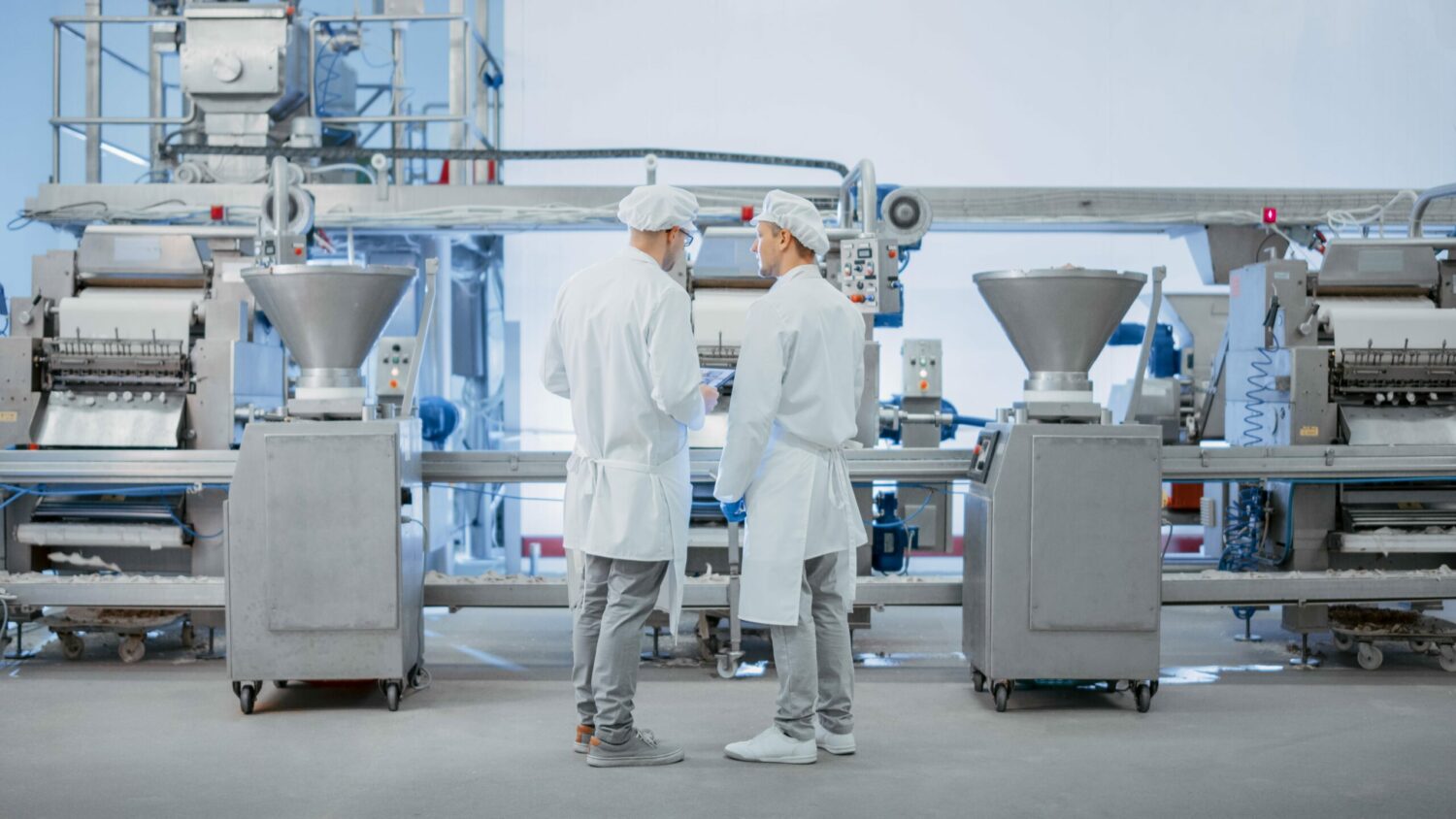
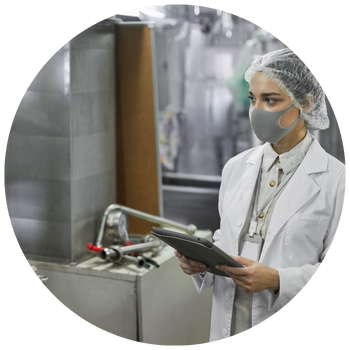
Food Safety GMP
Guidelines for establishing safety in food manufacturing
Good Manufacturing Practices (GMP) include guidelines on management, food handling actions, and design of the facilities, aimed to ensure safe and favourable conditions for safe food production.
Food law safety requires food business operators to ensure materials and products that have been supplied to them are safe and fit-for-purpose, and that relevant processes and products sold are safe for consumption. Food processors are also required to ensure to authorities that procedures, processes and facilities are in-line and compliant with food safety legislation.
ISO 22000 requires leadership and commitment in respect to the Food Safety Management System (FSMS) from top management. In other words, the person or group of people in charge of the operations needs to lead by example, setting in motion clear standards to be replicated by those below them.
There are many ways for leadership to demonstrate FSMS throughout their organisation’s operations, which can include:
- Ensuring strategic organization plans and food safety objectives are not only supported by organisation objectives, but also compatible and integrated throughout the organisation.
- Ensuring the integration of FSMS requirements into business processes
- Establishing a food safety policy
- Provision of appropriate and sufficient resources
- Facilitating the culture of continual improvement
- Communicating appropriately amongst interested parties
- Leading the management review meetings
Appropriate measures must be taken to ensure a safe production process. These measures must be established to identify and prevent hazards that would clash with Good Manufacturing Practises (GMP) and standard operating procedures (SOPs).
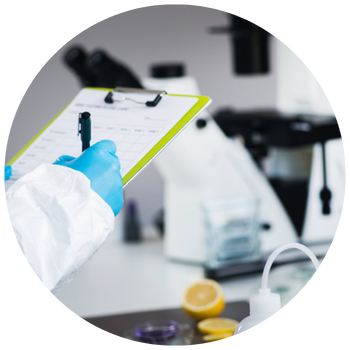
Steps For Consistent And Accurate Measures
There are eight simple steps to follow to ensure that measures are done properly and hygiene and safety is maintained throughout:
1. Accountability
Having someone qualified to be responsible for ensuring the process is consistent and maintained, and that any issues found from the process are reported.
2. Develop Procedures
The one in charge of the process must develop necessary procedures for monitoring, reporting completing anything involved.
3. Documentation
Completing detailed documentation describing the procedure, required tasks and what was used to monitor the process. In the event that something goes wrong, having documentation of everything beforehand saves a lot of time and money in the long run.
4. Training
Any and all staff that are involved in the procedures must be trained and know what is required of them for all activities.
5. Implement
Practices should be in line with documented procedures. In the event that it does not follow documented procedures, it can result in missed hazards that can be catastrophic and fall back on the leadership of the operation.
6. Monitor and Report Everything
Monitoring and reporting every part of the procedure will provide evidence in the event of routine inspections, help support staff new to the process with training and ensure consistency throughout the processes.
7. Consistent auditing and verification checks
Before every procedure, you must ensure that the system is working as intended and that documentation and competency checks are accurately up to date. This requires trained internal staff or external auditors that know and understand the procedures for equipment calibration and accurate validation. The person undertaking the verification activities cannot be the same person monitoring the overall proceedings as there would be a clear conflict of interest and easy for some things to get missed.
8. Review and update
In 2018, food safety regulation was updated placing a greater emphasis on ensuring food safety objectives were compatible and integrated throughout the organisation. Management must have relevant and regular procedures in place to review and update the programs, assess how well it performs, allocate resources appropriately, and look for ways to continually improve their food safety standards.
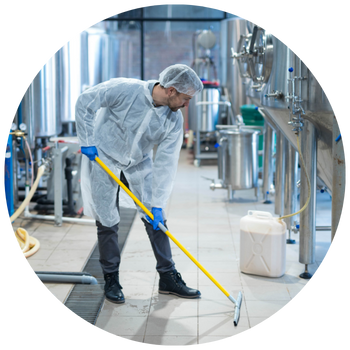
Identifying and Remedying Food Safety Hazards
Read below to understand the best methods to identify and remedy food safety hazards in your facility, cleaning & hygiene and pest control.
Facilities
To ensure good food safety standards, your operations facilities must follow and maintain hygiene, have enough space to store equipment, materials and product safely, and have effective means of waste removal. Your facility includes location, building design, construction, equipment, hygiene and utilities.
Location
Depending on where you plan to set up your facility, there may be different regulation requirements to abide by. We advise contacting the local authority for advice to ensure you can proceed without interruption.Your facility’s location should be:
In an environment with a reduced risk of natural disasters such as flooding, which can lead to power outages (significantly impacting temperature-controlled food facilities), spreading of waste contaminating products and equipment, and damaging/destroying equipment.
Far away from environmental and industrial pollution. However, this can be difficult to predict and plan ahead for as new operations outside your control can have an effect on pollution. There are simple ways to mitigate pollution impacting your facility including HVAC units which keep a steady control on the temperature and airflow.
in a pest-free area, or set up with the correct measures to prevent such infestations. Pests commonly found in food processing manufacturers include rodents such as rats and mice and insects such as cockroaches and flies. There are many ways to prevent such infestations such as regular cleaning and accurate stock safety checks carried out prior to accepting any sourced goods.
Easily reachable for emergency services. In the event of an emergency, whether it’s an injury to an employee or a break-out fire, it’s important to be easily reachable by emergency services to mitigate any further potential damage.
Close to sourced materials, if you are processing any perishable goods. As perishable goods require a fast turnaround time, receiving them sooner helps prevent having any spoilt and wasted food on-hand.
Must allow for easy removal of solid and liquid waste. This includes multiple factors such as:
Dedicated place for waste to be kept for collection
Scheduled waste collection (frequency dependent on the food being processed)
Vehicle & road infrastructure to allow for easy waste collection
Design and Construction
There are important factors to consider in the design and construction of your facility, even if you are moving into a previously used facility.
- Suitable for maintenance – Your facility’s design and layout should be suitable for regular maintenance, cleaning, and hygienic practices, and stop any potential physical, chemical or biological contamination during the food production process.
- Drainage – There must be drainage systems in place that prevent any puddling and are easy to clean and maintain and prevent contamination from pests and diseases.
- Ventilation – There should be adequate and controlled ventilation for the facility, ensuring that temperature is remained consistent throughout and any odours, humidity or dust from the outside or inside the building is contained and dealt with.
- Preventing dirt build-ups – Ceilings, windows, piping, cabling and lighting should prevent any build-up of dirt and condensation, and stop any risk of contamination.
- Durability – Walls should be made of durable and easy-to-clean materials suitable for food manufacturing such as metal panel systems. It is not recommended to use brick or other porous mediums as bacteria can grow inside, making it near-impossible to clean.
- Easy to clean – Floors should be designed using easy-to-clean material such as concrete with epoxy grout, which won’t crack shrink or discolour when wet. It is also a safe and easy flat material to walk on.
Equipment and Containers
When receiving goods shipments, you must ensure the transportation temperature has been maintained to what is required, as it can be affected by bacteria and attract pests.
Any equipment and working surfaces that are involved in the food processing process should be made of food-safe material such as stainless steel or food-grade plastic and designed to be easily cleaned and maintained with disinfecting chemicals to ensure food safety.
Food and People Hygiene
The food manufacturing process should have facilities suitable for cleaning food and equipment to hygiene standards.
Anyone working should be provided with adequate and suitable personal hygiene areas:
- A staff changing area – prior to entering the food processing area, staff must change into hygienic clothing.
- Hygienic facilities for eating and drinking such as a staff room or canteen.
- Toilets with an effective sewerage system
- Hand washing facilities including hot and cold water, soap and hygienic drying equipment/materials such as paper towels and hand sanitiser.
Cleaning & Hygiene
Establishing cleaning procedures and methods is crucial for preventing food contamination and needs to include any food production and equipment areas, as well as pest control and waste management. The below details how to maintain hygiene in each area.
Maintaining Goods and Cleaning Of Facilities
Your facility and the goods kept inside must be maintained to appropriate standards:
- Preventing cross-contamination – Food production areas and equipment require regular maintenance and cleaning during every stage of production to prevent cross-contamination.
- Suitable storage – Any and all goods such as raw materials, ingredients or finished products should be stored in clean and suitable areas i.e. temperature-controlled or humid rooms.
- Following manufacturer instructions – Cleaning and disinfection products must be used following manufacturers’ instructions to stop contamination of food and packaging.
- Regular cleaning – Building exteriors and interiors including walls, doors, floors and ceilings require regular cleaning and maintenance to prevent biological, chemical and physical contamination of raw materials, ingredients, processing and storage areas, equipment, vehicles, food products, personnel and more.
- Pest-free zone – External to the facility, the area should be maintained and kept free of vegetation and waste materials to prevent contamination and stop pests from being there.
Pest Control
When monitoring and finding pests, it’s important to document everything that has happened in accordance with food safety legislation. Pests are attracted by many things including smell, light, humidity and warmth, which all are found in and are accessible at food production facilities. This can be maintained through:
- Regular goods inspections – If someone has not followed the correct protocol, pests can show up at a moment’s notice, so it’s important that frequent inspections of raw materials, ingredients, packaging, containers, equipment and vehicles are done prior to any food preparation or usage.
- Regular facility inspections – As pests can gain access to your facility through many avenues, ensure that regular inspections are carried out which prevent them from accessing through windows, cracks, drains, piping and other areas. Alongside your facility, make sure that any vegetation and debris surrounding the building has been removed.
- Difficult to access food and water – This includes using pest-proof food containers and waste containers, turning taps off once finished, cleaning up spills as soon as possible and ensuring the facilities are always kept clean.
These can be monitored using an integrated pest management programme (IPM).
Integrated Pest Management Programme (IPM)
The goal of IPM is to ensure a rigorous process is in place to prevent pests from accessing your facility through physical and other barriers both on and around it. An IPM focuses on inspecting three separate areas; the facility’s surroundings, the facility’s structure, and inside the facility.
Consider the below when inspecting the surrounding area of the food processing facility:
- Vegetation and debris surrounding the building has been removed.
- Exterior lighting is not attached to the building, instead pointing towards the building.
- Appropriate storage for outside piping and equipment such as pallets kept away from the building.
- Appropriate outside drainage in the event of heavy rainfall
- Rodent barriers have been maintained around the property lines and the building
Consider the below when inspecting the facilities building structure:
- Proper drainage on the roof to prevent standing water and food residues
- Any cracks or holes in the walls, doors, windows and roofing have been properly cover-up or pave over
- Doors and windows are tightly sealed to prevent even the smallest of pests such as insects.
- There are no gaps at loading docks as rodents can easily climb/jump up cement and enter the facility.
Consider the below inspecting inside the food processing facility:
- Regular inspections
- Spills are promptly cleaned up and housekeeping throughout the facility is maintained
- Good storage practices of equipment, supplies and inventory
- Any materials or goods being brought into the facility are inspected
- Ceiling and wall vents have functioning closures or screens
Waste Management
Having a well-maintained waste management system in place is essential for preventing any potential food contamination and pests. The following are ways to ensure safe handling of waste throughout the food processing facility:
- Following legal procedures for appropriate waste storage and disposal
- Having an appropriate waste storage capacity in-line with your facility’s requirements
- Procedures in place for effective waste removal throughout every working area
- Using fit-for-purpose waste containers that are designed to resist pests
- Maintaining regular cleaning practices of the facility and the containers used to store waste
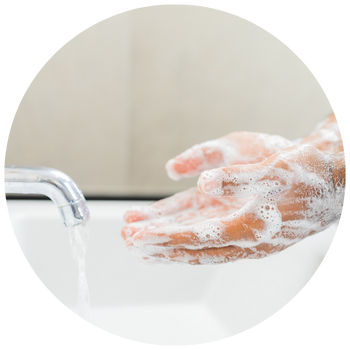
Personnel Hygiene in a Food Operating Facility
Food processing facilities is required by law to follow appropriate hygiene practices throughout their operations to ensure safety and prevent contamination.
Food processing facilities is required by law to follow appropriate hygiene practices throughout their operations to ensure safety and prevent contamination.
These practices include:
- Anyone carrying an infectious disease, whether showing symptoms or not showing symptoms, must not be granted access to enter a food handling or processing area.
- Anyone carrying an infectious disease must report their conditions to whoever is responsible and be documented by the company.
- Any open wounds such as cuts and skin abrasions should be covered with adequate protection to prevent any risk of contamination.
- Anyone handling food should maintain a high level of personal cleanliness, including:
- Washing and sanitizing hands before entering an area where food is handled, after using the toilet, after touching raw food, and after handling contaminated materials.
- Preventing and controlling sneezing, coughing, chewing or anything else that could contaminate the food.
- Removing accessories such as jewellery and watches before entering a food handling area.
- Everyone must wear hygienic clothing and accessories (such as hair and facial hair coverings) prior to entering a food handling area to protect food from contamination. This clothing must be clean and in fit condition before use and made of an appropriate material for the environment operating in.
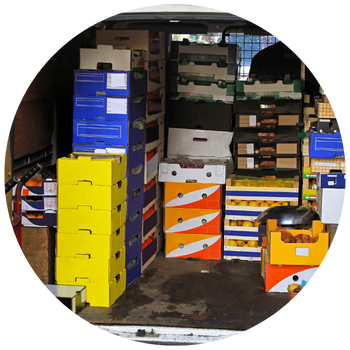
Food Safety Transportation
During transportation, raw materials, ingredients, packaging or finished products must be protected and kept safe, with measures in place to prevent any potential contamination, spoilage or deterioration.
Maintaining Food Quality
To maintain the quality of the products, prevent pests from invading and keep them safe from human contamination, vehicles, containers, and packaging must be appropriate for the products and conditions of transport.
This includes carrying out inspections upon arrival ensuring the containers and packaging are in good condition, that the food has not been contaminated and that the transportation conditions have been maintained at appropriate temperature and humidity.
Maintaining Transportation
Maintenance must be carried out on vehicles and containers, ensuring they are clean and repaired when necessary. Prior to loading, the vehicle must be inspected for contamination including cleanliness, pests, dust, odours and other potential risks that pose a threat to the goods.
The loading area must be designed and maintained to protect the goods being moved – this includes a flat surface for wheels to safely glide along the floor, any debris or equipment such as pallets or pallet wrap is out of the way, and that the area is kept clean and free from any spillage.

Assessing Control Measures
Simple steps to assess control measures accurately
Before undertaking control measures, an assessment is required to determine operational prerequisite programs (OPRP) or critical control points (CCP). This can be evaluated through:
- Understanding the probability of failure and how easy is to keep it under control
- How severe the result would be when failing and what effects will be caused by it
- Where it is in relation to other activities that have been implemented to reduce other hazards
- How specific the hazard is
- If there are any other measures available to reduce the hazard to an acceptable level
- How viable it is to measure its limits i.e. if it’s expensive to operate or if the negative results are clear outliers compared to other results.
- How feasible it is to monitor and detect failures on the applicable determined limits
These measures must be regularly documented and maintained in line with the ISO 22000, containing:
- The hazard you are controlling
- Who is responsible for the hazard and actions
- What measures have been put in place to control the hazard
- What the critical limit of the hazard is
- This must be measurable
- How the hazard is monitored
- If visual inspections are required as part of the monitoring system, you must define the instructions and specifications to those conducting the inspection to ensure consistency.
- What actions will be taken if the critical limit is exceeded
- This must be measurable and explain why they have been selected

Food Safety FAQs
Following food safety guidelines means that you are preventing any spread of bacteria and contamination in your food and saving yourself time and money in the long run.
Not following food safety guidelines can lead to unsuspecting members of the public becoming seriously ill and if your food processing business is found liable, it can result in a significant financial loss for your business.
In 2018, the ISO 22000 was released detailing the requirements for a food safety management system; explaining what a business must do to control food safety hazards and ensure that the food is safe to eat.
Standing water, or stagnant water, is water that is left for a long period of time without being drained or cleaned up. This can cause several problems in a food processing facility, including being a hazard to workers and creating a breeding ground for bacteria.
Integrated Pest Management (IPM) ensures that there is a necessary, detailed and consistent process in place to prevent pests from accessing your facility and contaminating it. Without using an IPM, your facility is at greater risk of being invaded by pests as things can easily be missed and fall between the cracks.
Bibliography
Nqa.com. 2022. GMP Certification – Food Safety Management Standard | NQA. [online] Available at: https://www.nqa.com/en-gb/certification/standards/gmp
NQA (2018). ISO 22000:2018 FOOD SAFETY MANAGEMENT SYSTEM IMPLEMENTATION GUIDE 90 43,000 TRANSPARENT *. [online] Available at: https://www.nqa.com/medialibraries/NQA/NQA-Media-Library/PDFs/NQA-ISO-22000-Implementation-Guide.pdf
www.food-safety.com. (n.d.). Integrated Pest Management in Food Manufacturing Facilities. [online] Available at: https://www.food-safety.com/articles/6996-integrated-pest-management-in-food-manufacturing-facilities

About Us
VermEx is a family-run pest control company with over 30 years of experience in providing a professional pest control service to commercial clients across the North of England, including Manchester, York & Leeds. We pride ourselves on our ability to quickly and effectively react to our customer’s needs and provide an unparalleled level of service that is individually tailored to their needs.
If your food processing facility has a pest infestation, get in touch with us today and we can arrange a free quote.
Get Effective & Affordable Commercial Pest Control
Pest control problems can be disruptive and inconvenient for businesses. Throughout the North of England, we provide effective and cost-effective commercial pest control services to a wide range of commercial, industrial, and agricultural businesses.
Over the last 30 years, VermEx has dealt with a wide range of pests with tailored solutions to meet your specific needs. You can be confident that our professional pest control solutions will provide you with peace of mind regardless of what your pest management problem may be. Contact our pest control experts if you have a pest problem on your commercial property.

